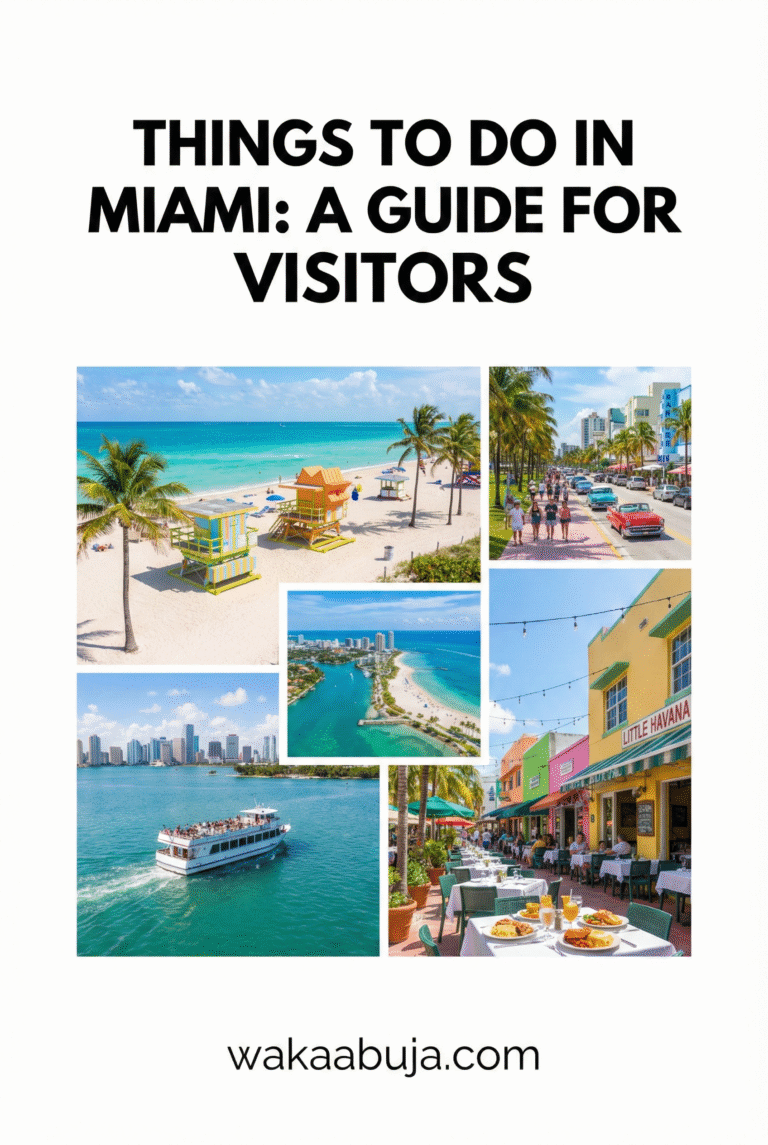TL;DR
Discover Nara’s top attractions—from its famous deer park to UNESCO heritage temples—with insider tips on where to stay, what to eat, how to get around, tours worth taking, budgeting advice, and safety tips.
This guide is packed with personal experiences and trusted advice to help you enjoy Nara like a local while staying safe and saving money.
Jump to Things to See and Do | Jump to Where to Stay | Jump to Costs & Budgeting | Jump to Safety Tips | Jump to FAQ
Welcome to Nara: Japan’s Ancient Capital Like You’ve Never Experienced It
If you think Nara is just a quick pit stop on the way to Kyoto or Osaka, think again. As someone who has wandered its peaceful streets and fed the iconic bowing deer in Nara Park, I assure you this city is a treasure trove of culture, history, and unforgettable experiences.
The blend of tranquil natural beauty and ancient temples makes it a must-visit destination for anyone wanting to dive deep into Japan’s classical era while keeping things relaxed. In this guide, I share my personal insights and pro tips to help you navigate, explore, and enjoy Nara to its fullest.
Must-See Attractions and Unique Experiences in Nara
Nara’s charm is rooted in its rich history and stunning landmarks. Here’s how to experience the city beyond the usual tourist trail.
Nara Park and the Bowing Deer
The highlight for many visitors is Nara Park’s free-roaming deer, considered messengers from the gods in Shinto tradition. These friendly deer bow when offered special deer crackers—a delightfully unique interaction. Be sure to follow park guidelines to treat the deer respectfully and avoid feeding them inappropriate foods. As dusk falls, the park’s peaceful gardens and ponds offer perfect zen moments for reflection.
Todaiji Temple and the Great Buddha
One cannot visit Nara without seeing the majestic Great Buddha housed in the Todaiji Temple, one of the largest wooden buildings in the world. The sheer scale of the Vairocana statue and the temple’s historical significance left me awestruck. The surrounding grounds are equally calming, ideal for absorbing Nara’s Buddhist heritage.
Nara National Museum
Art enthusiasts should not miss the Nara National Museum, boasting one of Japan’s finest collections of Buddhist art—ranging from sculptures to delicate paintings. Visiting during the Nara Tokae Lantern Festival (early August) adds an enchanting touch with thousands of lanterns lighting up Nara Park.
Heijo Palace Site
Step back into Japan’s Nara Period (710-794) at the Heijo Palace Site, once the seat of imperial power. While the original palace no longer stands, reconstructed gates and descriptive displays immerse you in ancient Japan’s grandeur. Visiting during autumn simulates ancient parades and performances, a sight to remember.
Try Local Flavor: Maguro Koya and Sake Tasting
I recommend grabbing a tuna bowl at Maguro Koya, a local favorite known for fresh, perfectly prepared seafood. For a taste of traditional craftsmanship, visit Harushika Sake Brewery for a sample of exquisite local sake. Remember, indulge responsibly!
Where to Stay in Nara: From Traditional Charm to Modern Comfort
Depending on your travel style and budget, here are a couple of favorites from my stays:
Century-Old Nara Hotel
For an immersive experience, I stayed here and felt transported to a traditional Japanese castle with modern amenities. Perfect if you want elegance and history combined.
Iroha Grand Hotel Kintetsu
This hotel offers modern convenience at a budget-friendly price and is centrally located near Kintetsu Nara Station. A great base for exploring without breaking the bank.
Getting Around Nara: Practical Tips for Easy Navigation
Nara’s compact size makes it very walkable, especially around Nara Park and the main temples. For exploring further sites, consider renting an e-bike, a personal favorite of mine for efficient and eco-friendly travel. Buses and local trains are also reliable and frequent, and the connection between Kyoto and Osaka is excellent via JR or Kintetsu lines.
Typical Costs & Budgeting Tips for Visiting Nara
If you’re planning your budget, here’s what to expect from my recent experiences and verified sources:
Accommodation
Mid-range hotels like Iroha Grand start around ¥6,000-¥8,000 ($45-$60) per night, while the Century Old Nara Hotel can range from ¥15,000+ ($110+).
Food
Local lunch specials such as the famed Maguro Koya tuna bowl run about ¥1,200-¥2,000 ($9-$15). Sake tasting sessions typically cost around ¥500-¥1,000 ($4-$7).
Transport
A one-way train from Kyoto or Osaka to Nara averages ¥560-¥800 ($4-$6). Local buses within Nara are about ¥210 ($1.50) per ride.
Tours
Small-group day tours from Kyoto or Osaka range from ¥8,000 to ¥15,000 ($60-$110), including transport and guided sightseeing.
Money-Saving Tips: Use the Kansai Activities Pass to combine train travel and admission discounts. Also, exploring on foot or by bike reduces local transport costs.
Best Time to Visit Nara for Weather and Events
Spring (March-May) and autumn (September-November) bring the best weather and vibrant cherry blossoms and autumn leaves, respectively. Visiting in early August allows attending the magical Nara Tokae Lantern Festival. Avoid Golden Week (late April to early May) for smaller crowds and better deals.
Getting to Nara: Easy Access from Major Cities
Nara is conveniently located under an hour from Kyoto and Osaka by train. The JR Nara Line and Kintetsu Nara Line provide frequent and affordable connections. For travelers from Tokyo, take the Shinkansen to Kyoto or Osaka and transfer to local trains.
Recommended Tours and Unique Experiences Around Nara
I highly recommend joining a guided tour if you want depth and ease. Here are some favorites based on my journey and widely praised:
Kyoto + Nara Golden Route Day Tour
This 11-hour tour covers key highlights such as Arashiyama Bamboo Forest and Kinkakuji Golden Temple, followed by Todaiji Temple, Kasuga Taisha Shrine, and the deer park in Nara. The small group setting offers personal attention and rich storytelling.
Nara E-Bike Tour
If you want to explore beyond walking distance without breaking a sweat, rent an E-bike. This tour often includes visits to traditional knife workshops, enhancing your cultural experience.
Sake Tasting Tour
Take a guided sake tasting experience at local breweries for an educational and delicious afternoon. Remember to schedule this separate from bike tours for safety.
Recommended Length of Stay in Nara
While day trips are popular, I suggest spending at least two days. This allows a relaxed pace, time for offbeat spots like Naramachi (a historic merchant district), and savoring the culinary delights and serene temples without rush.
How to Stay Safe in Nara: Practical Advice and Emergency Contacts
Nara is one of the safer cities in Japan, but it’s always wise to take common travel precautions:
- Respect local customs, especially when visiting sacred sites—remove shoes when required and keep noise levels low.
- Be cautious when feeding deer; avoid sudden movements or aggressive gestures.
- Use well-lit routes after dark and keep your belongings secure, especially in busy tourist spots.
- Carry a physical map or offline GPS, as some areas have patchy mobile coverage.
Emergency contacts in Japan:
- Police: 110
- Ambulance/Fire: 119
- Tourist Information Center, Nara: +81 742-12-2811
Frequently Asked Questions About Visiting Nara
Is Nara worth visiting for more than a day?
Absolutely! While many visit as a day trip from Kyoto or Osaka, spending 2-3 days allows you to explore the city at a relaxed pace, discover hidden gems like Naramachi, and enjoy seasonal events without rushing.
How do I get from Kyoto to Nara?
The fastest way is by Kintetsu Railway from Kyoto Station to Kintetsu Nara Station, taking about 35 minutes. Alternatively, the JR Nara Line from Kyoto Station is also convenient and economical.
Are the deer in Nara dangerous?
Generally, these deer are quite docile and accustomed to humans, but they are still wild animals. They can nip or butt if provoked or if you hold food for too long. Always follow visitor guidelines when interacting with them.
Where can I try authentic Nara cuisine?
Look for restaurants around Nara Park and Higashimuki Shopping Street for local specialties like kakinoha-zushi (persimmon leaf sushi) and fresh tuna bowls at Maguro Koya. Sake tastings are popular at Harushika Sake Brewery nearby.
What is the best season to visit Nara?
Spring, with cherry blossoms, and autumn, for vivid fall foliage, are the most beautiful and pleasant seasons. Summer hosts the atmospheric Nara Tokae Lantern Festival but can be hot and humid.
WakaAbuja has made every effort to ensure that the information in this post was correct at the time of publication. However, we do not assume any liability caused by errors such as pricing, hours, or location details.
Please consult official websites or social media pages for the most up-to-date information.



